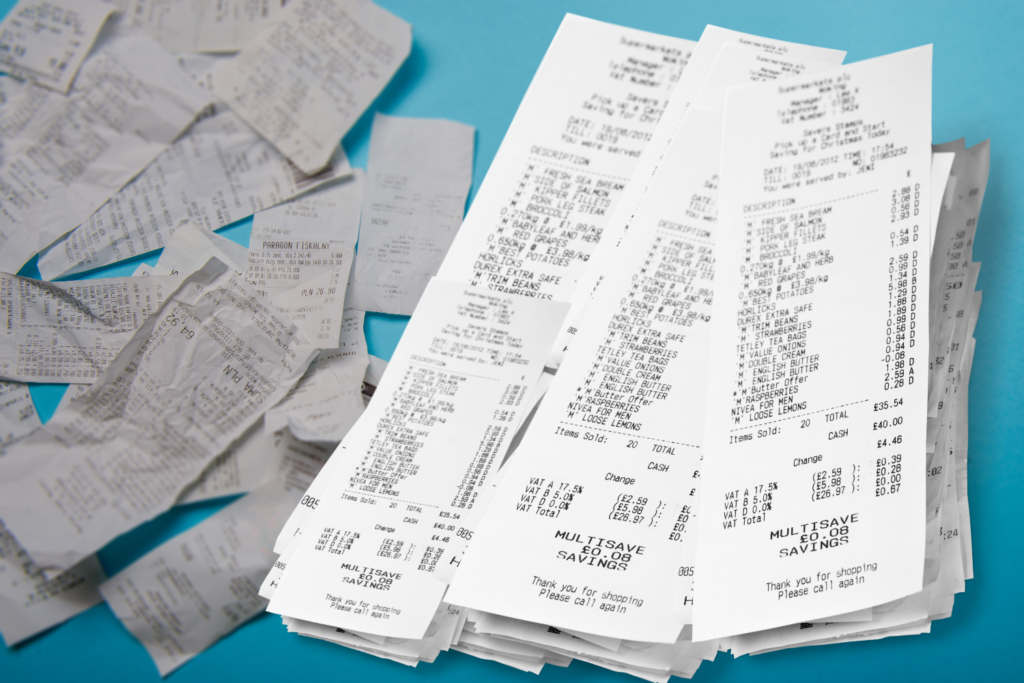Toss Out That Shoebox
“What do I do with all these receipts?” This is a question we get all the time from our clients. The days of desk spikes are long gone and we’re quickly leaving paper files behind in favor of digitized documents.
With quality record keeping, you won’t have to scramble through physical and electronic files every tax season, or in the event of an insurance claim or a legal dispute.
Decide Which to Keep and Which to Toss
Not knowing which receipts to keep and which to throw away makes starting the task of organizing them unpleasant and even intimidating. Order Your Life aims to provide simple, actionable guidance to make this easier.
Keeping receipts does more than retain proof of purchase. They can help with budgeting by showing spending patterns. Say you’re trying to save money and believe you might be eating out too much. Keeping track of these habits can be as simple as putting the week’s dining out receipts on the fridge.
Keep These
- Anything used for business expenses, like meals, office equipment, rent, etc.
- Records of charitable donations
- Large purchases like furniture and electronics
- Home and auto repairs
- Anything on a payment plan, like tax payments
- Medical receipts (if you deduct them on your taxes)
- Receipts for insurance premium payments
- Warranty documents
- Anything tax-deductible
Toss These
Throw away receipts for anything you can’t or don’t plan to return, like groceries, entertainment, and other consumables. Shred anything that has personal information on it. Decline paper receipts if not needed or get an email receipt whenever possible. Keep records for things you paid for in cash for a short time, then shred them.
How to Save and Digitize Receipts
Receipts can be stored in various formats such as images, screenshots, emails, and scans. You can sort them by type of spending, date, entity, or whichever works best. We help people find their ideal system every day. Label everything carefully with information that will tell you what you need to know at a glance, like the date, item and payee. Many organizations, like the IRS, will accept scanned images as backup, but it’s a good idea to know what format is acceptable for your needs.
Once you’ve digitized and stored it, check to see if the physical form of the document should be retained. If not, shred the document right away. This will prevent redundancy. One of the points of digitizing is to make your data more secure, and shredders cut paper in strips too small to ever reassemble. Here’s one we really like!
Where to Store and Digitize Receipts
We’ll help you create an easily accessible way to organize and retain the receipts you need. Some options:
- Make a folder in your computer where you keep your financial records and make a folder inside that one for receipts. You can also divide that for business receipts, medical receipts, and such.
- Use an app on your mobile device. Both Dropbox and iCloud Files have built-in camera scanners on their mobile apps. The Scannable app by Evernote is also a great option, and you don’t have to have or use an Evernote account to use it.
- If you’re scanning receipts at home the best product is the Fujitsu ScanSnap. Find out more about those here.
Quality Record Keeping Made Easy
You can successfully digitize and organize receipts no what level of tech skills you have. It’s about you and making your life easier. Learning how to deal with your extra paper doesn’t just get you organized, it adds peace of mind. Contact us any time— we look forward to hearing from you.


